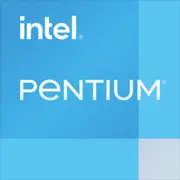Intel Pentium G3250

Intel Pentium G3250 in 2025: Budget Classic or Obsolete Relic?
A complete analysis of the processor for budget-conscious users
Key Specifications: What's Inside?
The Intel Pentium G3250, released in 2014, is still found in budget builds. Its Haswell architecture (4th generation Intel Core) is built on a 22nm process technology, which was progressive for its time. However, in 2025, this looks archaic compared to AMD and Intel's 7nm chips.
Cores and Threads: 2 cores, 2 threads. This is the minimum configuration even for basic tasks. The L3 cache is 3MB, which is half that of modern Pentium Gold processors. Integrated Graphics — Intel HD (GT1) for the 4th generation: supports 4K via DisplayPort, but is not suitable for gaming.
Performance:
- Geekbench 6: 573 (Single-Core), 975 (Multi-Core).
For comparison, the Pentium Gold G7400 (2023) scores around ~1500/2800. However, it's sufficient for document work or YouTube.
Key Features:
- Unlocked multiplier (but only in G3258, not in G3250).
- Low power consumption (TDP 53W).
- Support for SSE4.2 and AVX2 instructions.
Compatible Motherboards: What to Choose in 2025?
Socket: LGA 1150 — an outdated format. New boards are not being produced, but some new models can still be found on the market:
- ASRock H81M-HDS ($70-90).
- Gigabyte GA-B85M-D3H ($80-110).
Chipsets:
- H81/B85 — basic, no overclocking.
- H97/Z97 — support for RAID, more SATA 6Gb/s ports.
Selection Tips:
- Look for boards with HDMI/DVI for connecting modern monitors.
- Check for USB 3.0 availability (relevant for external SSDs).
- Avoid boards with swollen capacitors — a common defect in older models.
Memory: DDR3 vs. Modern Standards
The Pentium G3250 works only with DDR3-1333/1600. DDR4/DDR5 are not supported.
Recommendations:
- Use dual-channel mode (2x4GB or 2x8GB) to increase bandwidth.
- Maximum capacity is 32GB, but 8GB is enough for an office PC.
- Prices: new 8GB DDR3-1600 modules cost $25-30 (e.g., Kingston HyperX Fury).
Limitations:
- No support for XMP profiles — memory speeds above 1600 MHz are not achievable.
Power Supply: How Many Watts Do You Need?
With a TDP of 53W, the processor is extremely power-efficient.
Recommendations:
- For a system without a discrete graphics card: 300-400W (e.g., be quiet! System Power 9 400W, $45).
- With an NVIDIA GT 1030 level GPU: 450-500W (Corsair CX450, $55).
Important:
- Don't skimp on the power supply! Cheap models (like Apevia) can "kill" components.
Pros and Cons: Who Should Consider It?
Pros:
- Price: new processor — $50-60 (if you find it), used — $15-20.
- Energy efficiency: suitable for compact HTPCs.
- Easy installation: the stock cooler works fine without thermal paste.
Cons:
- Weak multithreading: 2 threads are insufficient even for a browser with 10 tabs open.
- No support for PCIe 4.0, USB 3.1, NVMe (only through adapters).
- Outdated graphics: CS:GO on minimum settings — 30-40 FPS.
Use Cases: Where is the G3250 Still Relevant?
1. Office PCs: Word, Excel, Zoom — the processor can handle it but may lag when multitasking.
2. Media Center: Streaming video at 1080p/4K (with hardware decoding) through Kodi or Plex.
3. Servers: NAS based on OpenMediaVault — low power consumption and sufficient power for file storage.
4. Educational Projects: PC for a student — running Scratch and educational programs.
Real Example: A build for parents — G3250 + 8GB DDR3 + 240GB SSD. Result: Fast booting of Windows 11 (bypassing TPM), smooth YouTube viewing.
Comparison with Competitors: Who's Better?
1. AMD Athlon 3000G (2023):
- 2 cores/4 threads, Vega 3 GPU.
- Geekbench 6: ~650/1350.
- Price: $60 (new).
Conclusion: Better in multithreading, but more expensive.
2. Intel Celeron G5920 (2020):
- 2 cores/2 threads, UHD 610.
- Geekbench 6: ~600/1100.
- Price: $45 (new).
Conclusion: An alternative, but without advantages.
Building Tips: How Not to Go Wrong
1. SSD is a Must: Kingston A400 240GB ($25) will eliminate HDD "lags."
2. Optimal RAM: 8GB DDR3-1600 (2x4GB).
3. Cooling: The stock cooler is enough, but for silence, consider Deepcool GAMMAXX 200T ($18).
4. Case: Mini-ITX (Fractal Design Node 304) for a media center.
Mistakes to Avoid:
- Buying an expensive motherboard — don't overpay for Z97.
- Installing a powerful graphics card (like RTX 3050) — the processor will become a "bottleneck."
Final Conclusion: Who Should Consider the Pentium G3250?
This processor is a choice for those who:
- Are building a cheap PC for basic tasks (up to $200 for the system).
- Need an energy-efficient solution for 24/7 operation (e.g., a home server).
- Are looking for an upgrade for an old computer with LGA 1150.
Reasons Against Purchase:
- If you plan to work in Photoshop, edit videos, or play games in 2025 — it's a waste of money.
Alternative for 2025:
- For $100-120, you can get a used Intel Core i5-6500 + motherboard — this would provide a significant performance boost.
Conclusion: The Pentium G3250 in 2025 is a niche product. It survives due to its low price and simplicity, but its time is close to an end. Choose it only if your budget is strictly limited and your tasks are minimal.
Basic
CPU Specifications
Memory Specifications
GPU Specifications
Miscellaneous
Benchmarks
Compared to Other CPU
Share in social media
Or Link To Us
<a href="https://cputronic.com/cpu/intel-pentium-g3250" target="_blank">Intel Pentium G3250</a>